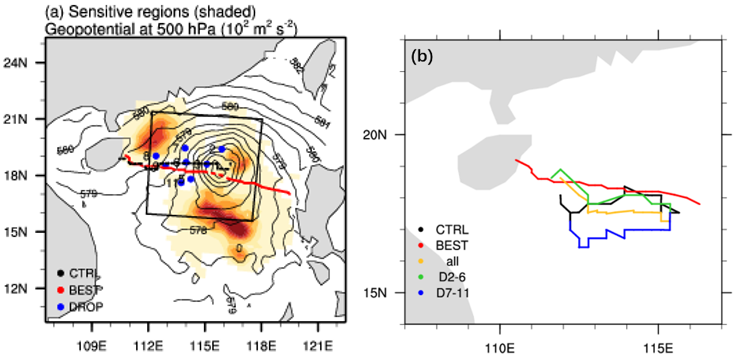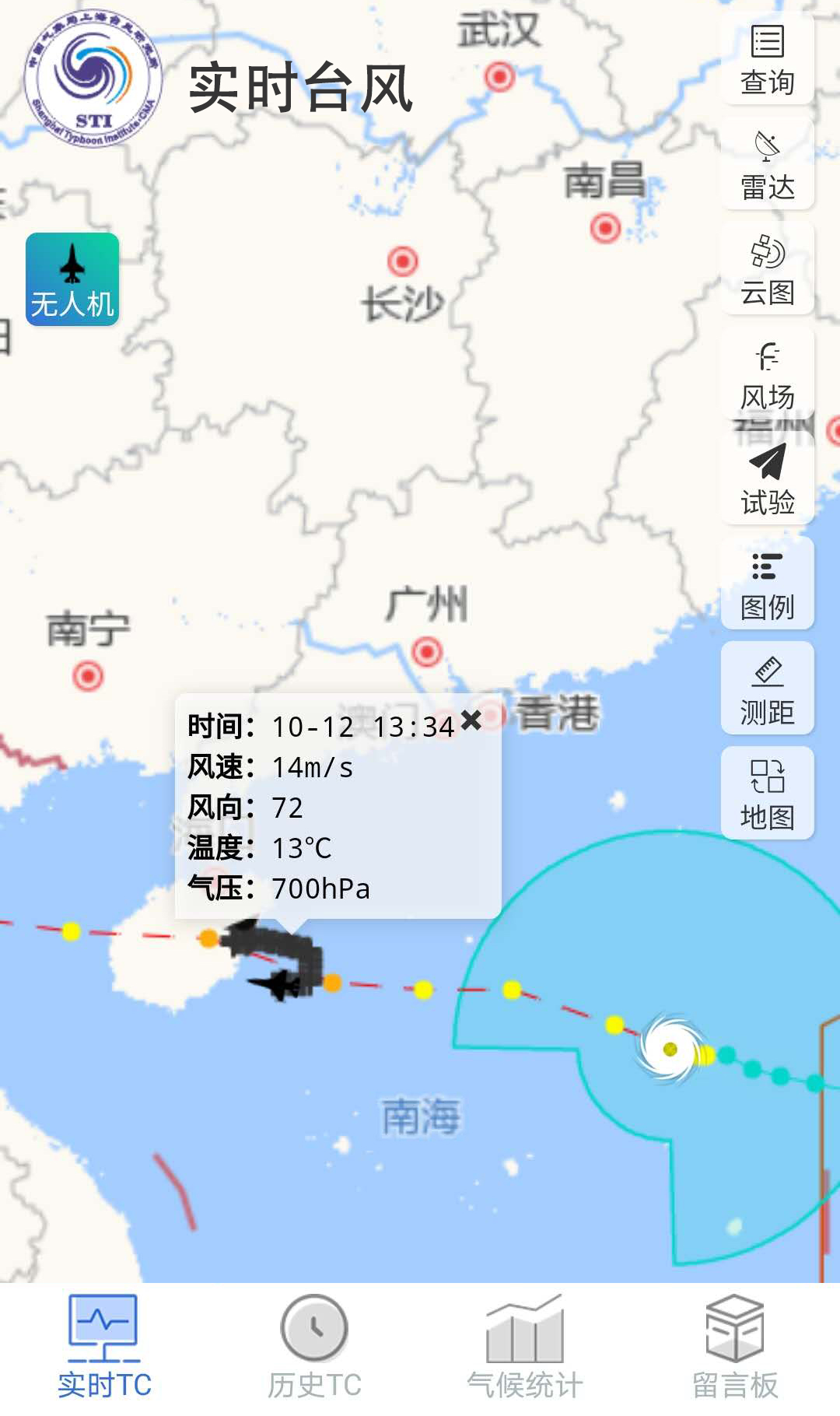中国科学院大气物理研究所大气科学和地球流体力学数值模拟国家重点实验室
State Key Laboratory of Numerical Modeling for Atmospheric Sciences and
Geophysical Fluid Dynamics (LASG)
Institute of Atmospheric Physics, Chinese Academy of Sciences
State Key Laboratory of Numerical Modeling for Atmospheric Sciences and
Geophysical Fluid Dynamics (LASG)
Institute of Atmospheric Physics, Chinese Academy of Sciences

Vol.14/No.14 Ddcember 2020
LASG Predictability Team Assists Tracing Typhoon Nangka-Newsletter

Fig.1 (a) Sensitive regions (shaded) and dropsondes (blue dots) and (b) forecast tracks after assimilating dropsondes data (colored) for Nangka (2016). Red (black) dots/lines indicate the track at 1-h interval in the best track (control run).
Using the dropsonde data obtained in this field observation, Prof. DUAN’s team did assimilation experiments to illustrate the availability of the aforementioned sensitivity on improving track forecasts. It is shown that the forecasted track assimilating the dropsonde data #2-6 in the sensitive region is closer to the best than that assimilating data #7-11 in non-sensitive area, even closer than that assimilating all the data.
As another milestone after the first integration of the CNOP and Fengyun-4 satellite observations for another three typhoons Higus, Maysak, and Chan-Hom in 2020, this field observation marks the availability of CNOP in the operational targeted observations for tropical cyclones.

Screenshot from App by Shanghai Typhoon Institute China Meteorological Administration
Add: No.40, Huayanli, Beichen West Road, Chaoyang District, Beijing P.O. Box 9804, 100029, China
E-mail: lasg_newsletter@lasg.iap.ac.cn
Editors: Chuanyi Wang (wangcy@lasg.iap.ac.cn), Kangjun Chen(ckj@lasg.iap.ac.cn)
E-mail: lasg_newsletter@lasg.iap.ac.cn
Editors: Chuanyi Wang (wangcy@lasg.iap.ac.cn), Kangjun Chen(ckj@lasg.iap.ac.cn)